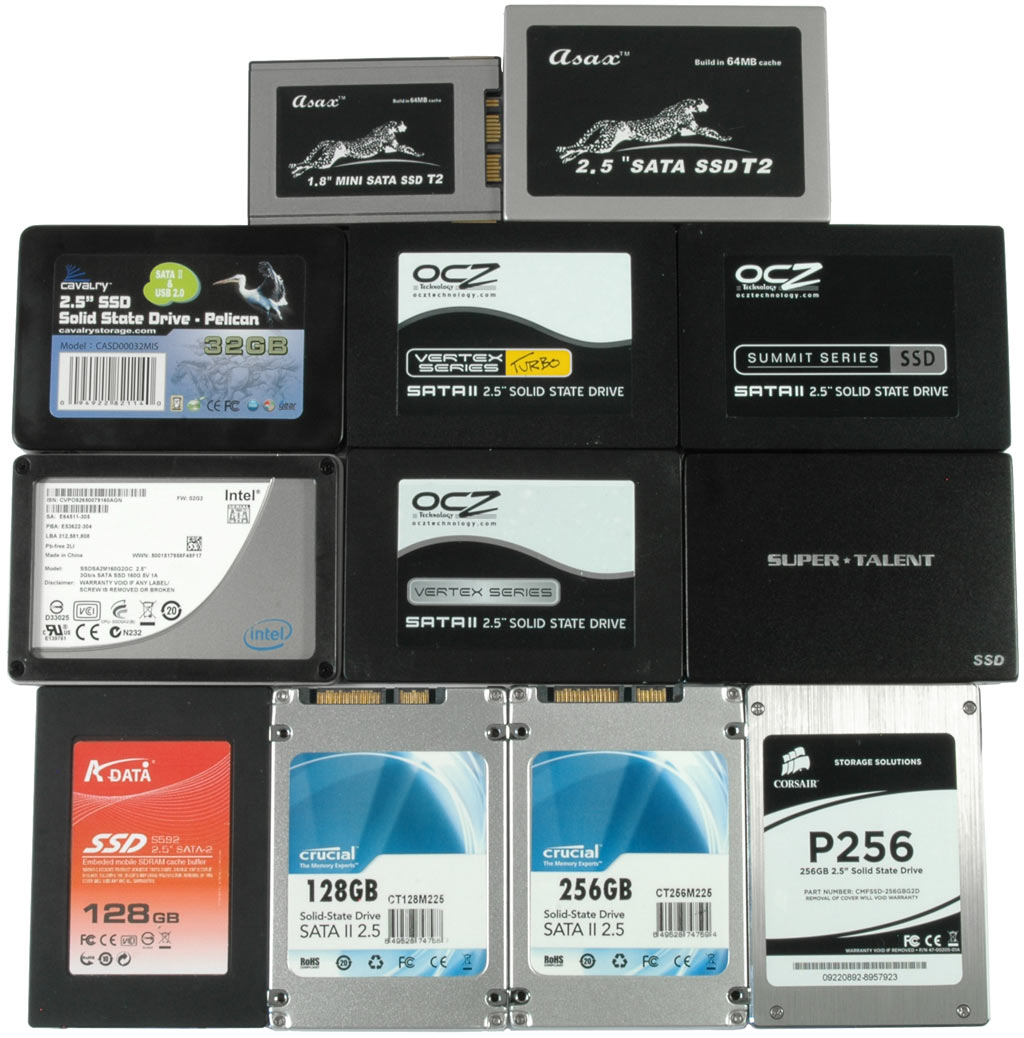SSD Summer Slam: 12 New 2.5" And 1.8" Drives Rounded-Up
SSDs: All Grown Up
Hardly a week goes by in which we don’t receive information or updates about solid state drives (SSDs). These flash-based storage alternatives were introduced in 2006 when Samsung released a 32GB prototype that used UltraATA/66. The first drives available at retail were easily capable of outperforming hard drives when it came to I/O performance, but not all delivered greater throughput. Overall, first- and second-generation flash SSDs simply weren’t as efficient as promised. In addition, processing power seems necessary to reach maximum SSD performance, and all SSDs have demonstrated negative performance impacts over time due to write amplification, wear leveling algorithms, and the fact that flash memory cannot just be overwritten. It has to be read, erased, and rewritten.
Older SSDs or those with older firmware are still susceptible to these problems. It wasn’t until late 2008, when drives arrived with built-in cache to sail around these issues, that we saw substantial progress. Today, key vendors are assidious about providing firmware updates every few weeks, so it was time for us to collect a dozen new drives and put them to the test. All have been added to our SSD Charts for easy comparison, as well.
Why SSDs?
Regular readers have probably visited this question several times already, but it’s important to point out that the future of fast storage solutions for your operating system does not lie with magnetic hard drives. System storage will increasingly be based on non-volatile silicon technology, such as flash memory, for speed and efficiency reasons. Hard drives will be around for many years to come, but they’ll increasingly be used for longer-term storage and archiving because they suffer from rather long latencies due to necessary head repositioning from one track to another (seek time) and rotational latency.
SSDs are capable of providing much quicker random access. While hard drives require between 4 and 20 ms for average access operations, SSDs run between 0.05 ms and 2 ms in worst-case write access scenarios. Depending on the SSD model and firmware focus (desktop versus enterprise workloads), the resulting I/O performance can be up to 50 times faster than on hard drives. Finally, SSDs deliver throughput of up to 240 MB/s, while even the fastest enterprise hard drives are still limited to a bit more than 200 MB/s (Seagate's Cheetah 15K.7). Yet, it has to be said that hard drives are still much more reliable in delivering consistent and reproducable performance.
Trends and Capacities
While Western Digital has already announced the first 2.5” mobile hard drives with a 1TB capacity (12.5 mm z-height), SSDs are still limited to a maximum of 256GB in the same form factor (although Intel is expected to start shipping 320GB versions of its X25 drives soon). In contrast, even regular 2.5” mobile hard drives (9.5 mm z-height) deliver twice the capacity of the largest SSDs. More significantly, 500GB notebook drives are affordable at prices between $80 and $120. You can get an SSD drive for about the same price, but then your capacity will most likely not exceed 32GB (for example, the OCZ Vertex 30GB) or you might be stuck with outdated technology (PQI, Transcend, Crucial 32GB). Ultimately, with SSD, you’re buying 5% to 15% of a hard drive’s capacity at the same price, or you’ll pay up to $800 if you want 256GB.
Get Tom's Hardware's best news and in-depth reviews, straight to your inbox.
The Candidates
We received several new SSDs between July and mid-August: A-Data’s 128GB S592 drive (Indilinx controller, MLC flash); two models from a Chinese vendor called Asax (1.8” and 2.5”, MLC flash); Cavalry’s SSD 32GB Pelican (JMicron JMF602); Corsair’s P256 (based on the Samsung PB22-J); the new Crucial M225 series (Indilinx, MLC); Intel’s new 34nm X25-M at 160GB; the OCZ Summit, Vertex and Vertex Turbo (Samsung, Indilinx); and lastly the Super Talent's UltraDrive ME (Indilinx).
